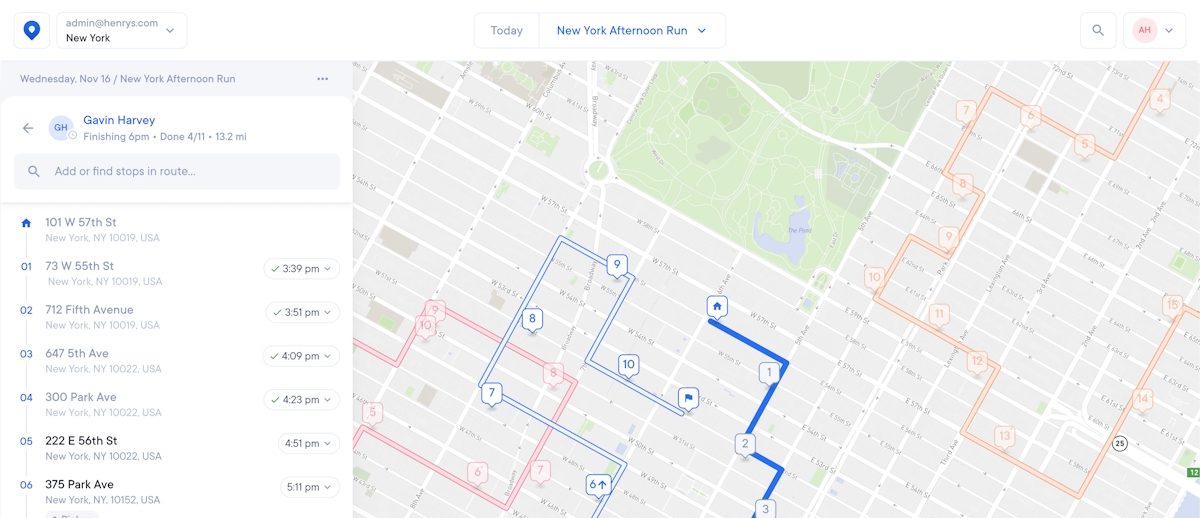Idling and How It Impacts Your Bottom Line
Idling in traffic is a waste of delivery driver time and fuel. How much gas does idling use? Find out with this anti-idling guide.

Idling delivery drivers stuck at stoplights and sitting in traffic waste time and fuel. Trust Circuit for Teams to plan efficient routes and avoid idling.
“Idling” is when a vehicle’s engine is running but the vehicle isn’t going anywhere. You might end up idling if you’re stuck in a traffic jam or waiting at a red light.
If you manage a delivery team, you want to cut down on car idling whenever you can.
Why?
First off, nobody likes sitting in traffic — least of all your delivery team. Your drivers want to finish their deliveries so they can call it quits for the day.
As a delivery manager or dispatcher, driver efficiency is also in your best interest.
Drivers who complete their deliveries quickly help minimize the risk of delivery delays.
Prompt deliveries = happy customers = good for business.
(Hint: This is just one way to improve delivery service).
Idling also wastes gas. Cutting down on idling fuel consumption can help cut fuel costs.
Plus, idling is bad for the vehicle’s engine, so avoiding idling can extend the vehicle’s life span.
I explain exactly how much fuel idling wastes and how you can help your driving team avoid idling.
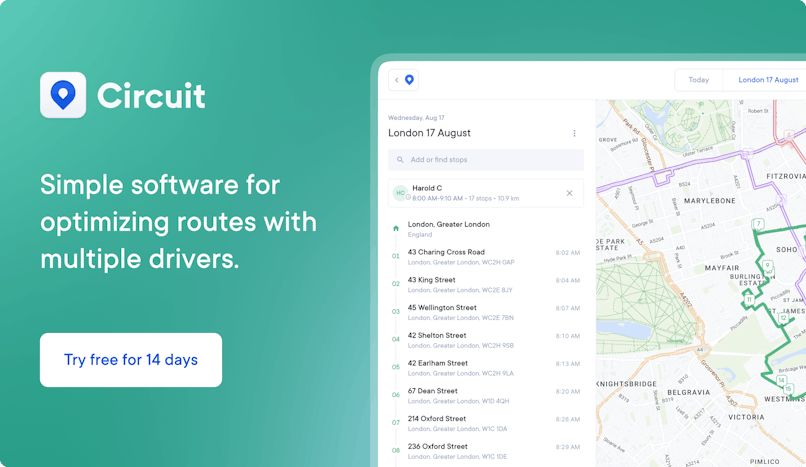
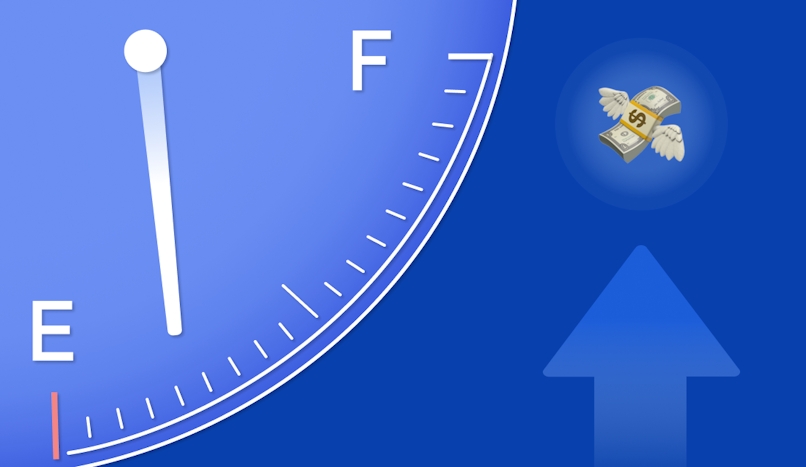
Idling increases fuel consumption
An engine uses fuel when a vehicle is idling, even though the car isn’t moving.
This is a pointless waste of gas, and one of the main transportation costs for businesses with delivery drivers.
Just how much gas does idling use?
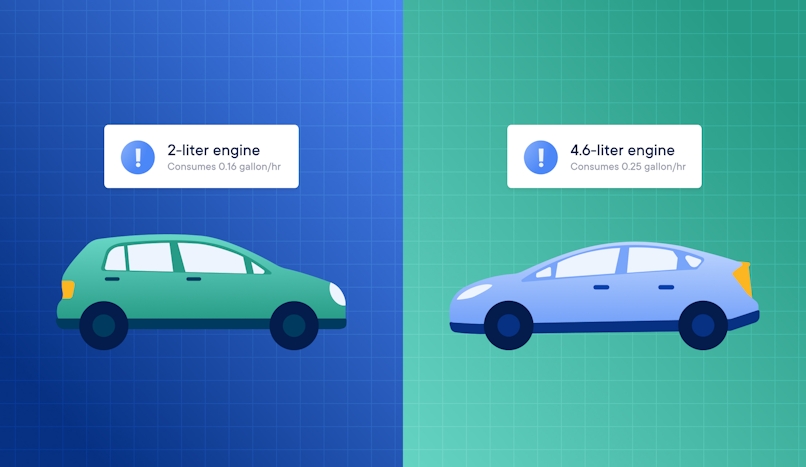
Another study found that an idling car consumes about 0.17 gallons of fuel per hour.
Yet another source suggests that idling uses about 0.5 gallons of fuel per hour.
So, what gives?
The truth is that the amount of fuel a car uses while idling depends on the vehicle’s weight, engine size, the type of fuel it uses, and its fuel economy. Fuel economy refers to a vehicle’s gas mileage or miles per gallon (MPG).
There’s no one answer to the question of how much gas a car uses while idling.
But one thing is for sure: Idling is wasteful because the car is using fuel without moving.
This contributes to carbon dioxide and greenhouse gas emissions, causing air pollution.
And since it wastes fuel, idling wastes money.
Some estimates suggest that one hour of idling per week could cost a delivery business $65 per vehicle per year.
And if you have a team of ten drivers, you’re looking at $650 annually.
Oh, and that estimate dates back to a time when a gallon of gas was just $2.50 (remember those days?!).
Gas consumption on idling cars and non-diesel engines
One thing that determines how much gas an idling car uses is whether it has a diesel engine or a non-diesel engine.
This is important to consider since a lot of delivery teams use larger vehicles with diesel engines.
Research from the Argonne National Laboratory suggests that an idling compact sedan burns 0.16 gallons of fuel per hour.
But this assumes the vehicle isn’t loaded down with packages (more packages = more weight = more fuel needed).
As of June 2022, the average price for regular unleaded gas in the US was $5.01.
So, 10 hours of idling per week would equal $8.016 (10 hours x 0.16 gallons/hour = 1.6 gallons → 1.6 gallons x $5.01 = $8.016).
That’s $8.016 per week for just one vehicle.
If you have five vehicles, that’s $40.08 per week.
In one month? That’s $171.77.
In one year? $2,089.89.
Gas consumption on idling trucks and diesel engines
According to the Department of Energy, an idling diesel truck consumes about 0.8 gallons per hour.
The average price for diesel fuel as of June 2022 was $5.786.
So, 10 hours of idling per week would equal $46.288 (10 hours x 0.8 gallons/hour = 8 gallons → 8 gallons x $5.786 = $46.288).
Again, that’s per week for ONE vehicle.
Long story short: It can add up fast.
Idling can damage the vehicle’s engine
Leaving the engine running while the vehicle isn’t moving is also bad for the engine.
Motor oil degrades quicker in an idling engine.
Oil helps prevent friction between essential engine parts like cylinders and pistons.
If the motor oil degrades, the risk of friction in the engine increases — and that friction can wear down these key engine components.
Idling can also build up carbon residue in the truck’s engine, shortening its life span.
Finally, an idling car also drains other components, like the battery (which is responsible for powering things like lights, air conditioning, and windshield wipers).
A drained battery also means the car won’t start (in which case, your driver will need to get a jump or call a tow truck).
As a delivery manager, vehicle maintenance costs are another overhead cost you want to minimize.
Data suggests a car’s routine maintenance costs 0.09 cents per mile.
If a car drives 20,000 miles a year, that adds up to $1,800 for one year (for just one vehicle).
Of course, exact maintenance costs depend on other factors (like the type of vehicle).
Idling means fewer deliveries
Idling is bad for your business because it increases overhead costs, like fuel and vehicle maintenance.
It’s also bad for business because it means your drivers are being inefficient.
When drivers are stuck idling in traffic or at stoplights, they aren’t completing their deliveries as quickly as possible.
This can mean late deliveries — and possibly unhappy customers.
It also means your drivers can’t complete as many deliveries per shift.
As a result, you may need to hire more drivers (and get more vehicles) to keep up with delivery demand.
It’s definitely cheaper and easier to simply make sure drivers are efficient — and that includes avoiding idling.
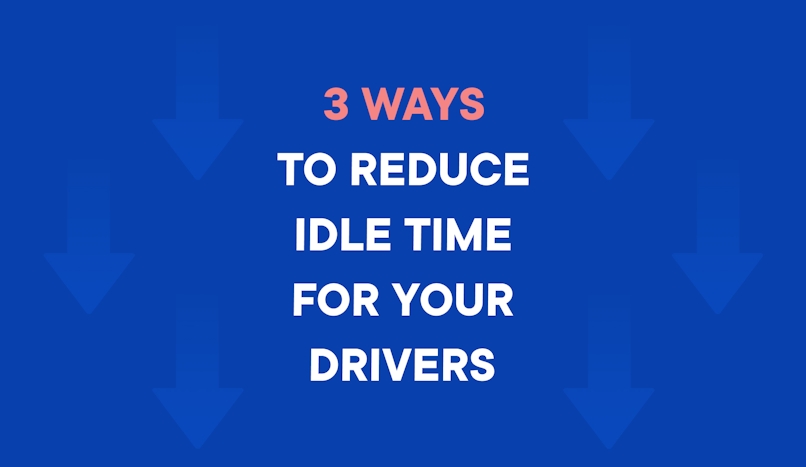
3 ways to reduce idle time for your drivers
So, what can you do to cut back on idling?
Here are some easy steps to reduce idling and use less fuel.
1. Establish guidelines for engine idling and train drivers
Establish clear guidelines for delivery drivers to help reduce idling.
For example, make it a company policy not to “warm up the engine.”
Another technique you can recommend is cutting the engine after more than 10 seconds of idling.
There’s an old myth that turning off and restarting the car is worse for fuel efficiency than keeping the car running.
But this isn’t the case.
2. Consider purchasing auxiliary power units (APUs)
You can also reduce idling by investing in auxiliary power units (APUs). These devices power trucks during rest periods, reducing fuel consumption.
Meanwhile, your drivers can still enjoy comforts like the air conditioner without wasting gas.
3. Optimize driver routes to avoid traffic
Optimizing delivery routes is another technique you can use to reduce vehicle idling.
Route optimization means finding the fastest sequence of delivery stops.
For example, good route optimization will cluster deliveries that are in the same neighborhood so the driver doesn’t have to go back and forth to make deliveries.
In the past, managers used old-school tools like maps and Excel sheets to optimize routes.
Today, route optimization software like Circuit for Teams does the job quickly.
Circuit for Teams uses digital maps and real-time traffic data to plan the fastest route sequence for drivers.
It considers common hurdles that slow down drivers and result in idling, like traffic jams and construction sites.
As a result, drivers work faster, reduce idle time, and complete more deliveries.
Delivery route software doesn’t just save time — it also cuts down on expenses like fuel.
Circuit for Teams can help reduce idle time and increase your bottom line
Clearly, idling is bad news.
It wastes fuel.
It hurts the environment.
It damages the vehicle’s engine.
AND it reduces delivery efficiency — which can mean delayed deliveries and unhappy customers.
Many factors impact just how much fuel (and money) idling uses up, from the vehicle’s size to the type of fuel it uses.
But one thing is clear: Idling is wasteful.
The good news is that you can take steps as a delivery manager or dispatcher to reduce idling.
I’ve gone over some possibilities above, like establishing guidelines for your driving team to reduce idling, purchasing auxiliary power units, and optimizing driver routes to avoid traffic.
Use Circuit for Teams to optimize your driver routes. The route planning software finds the fastest point from A to B, getting your drivers where they need to go fast.
Circuit for Teams also uses real-time traffic data to help drivers avoid common sources of idling, like traffic jams and construction sites.
With Circuit for Teams, your drivers can save time and reduce gas usage — saving your business money on fuel and vehicle maintenance costs.





